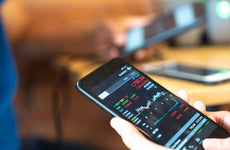What is buying power in investing?

The Bankrate promise
At Bankrate we strive to help you make smarter financial decisions. While we adhere to strict , this post may contain references to products from our partners. Here's an explanation for .
The amount of liquidity you have available to buy securities is called buying power. It’s also known as excess equity, and refers not only to the cash available for buying assets but also the available margin for leveraged accounts. For instance, a standard margin account provides two times equity in buying power and a pattern day trading account provides four times equity in buying power.
We’ll cover examples of buying power in leveraged accounts and the differences between buying power and purchasing power, which are not synonymous terms.
Examples of buying power
The amount of leverage available to you depends on the brokerage firm that hosts your margin account. Generally speaking, most margin accounts offer buying power of two to one, and the regulatory minimum you must deposit in your account is $2,000. For example, if you have $3,000 in a margin account, you could leverage a total of $6,000 to buy marginable stock. Some brokerage firms will offer more buying power, but it depends on the firm and the investor. In a Schwab account, for instance, you can check by clicking “buying power” on the trade page.
Day traders, on the other hand, have access to four times buying power. The SEC requires that pattern day traders (investors who execute four or more day trades in five consecutive business days), maintain a minimum equity of $25,000 in their margin account. That means if you have $30,000 in your margin account, your buying power could be $120,000.
Buying power vs. purchasing power
Buying power and purchasing power are not the same thing. Buying power is the amount of securities that you could purchase with a given amount of money, whereas purchasing power is how much a unit of currency will buy, such as how much you can purchase with one dollar.
Here’s more about purchasing power, including some related economic terms.
Purchasing Power Parity (PPP)
Purchasing power parity (PPP), also known as the law of one price, states that a unit of currency should have the same purchasing power around the world. PPP is usually measured by comparing a basket of goods and services in different countries, taking into account their exchange rates. It is used to compare the relative costs of living between countries.
PPP levels will vary based on the goods that the currency has the ability to purchase, which can be local, non-tradable goods and services, or tradable goods such as non-perishable commodities that can be sold on the international market.
Purchasing power and inflation
Inflation erodes purchasing power by decreasing the number of goods or services you can purchase with the same amount of money. For example, a carton of eggs that cost $3 six months ago might now cost $6 due to inflation.
Consumer Price Index (CPI)
The Consumer Price Index (CPI) is a measure of the average change in prices over time that consumers pay for a basket of goods and services. It’s calculated by the Bureau of Labor Statistics (BLS). The CPI is used to measure inflation and is one of the most popular measures of inflation and conversely, deflation. Purchasing power can be measured by comparing the price of a good or service against the CPI.
Bottom line
Buying power, also known as excess equity, is the cash available for buying assets and the available margin for leveraged accounts. Most margin accounts offer investors buying power at a two-to-one ratio, while pattern day traders generally have access to a four-to-one ratio.
Related Articles



Value investing vs. growth investing: Which is better in today’s market?
